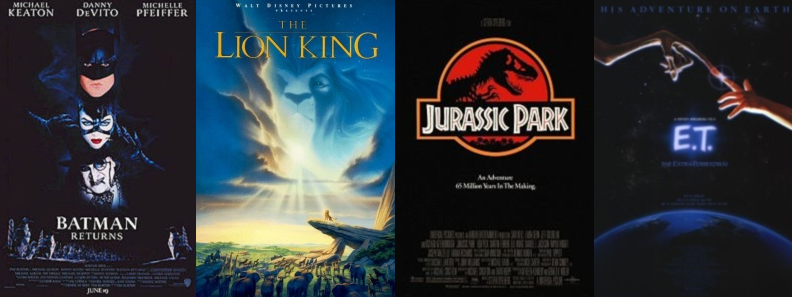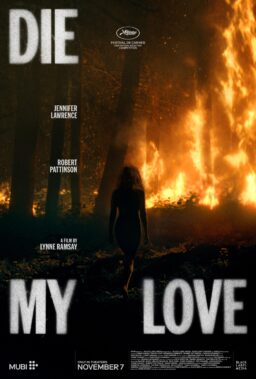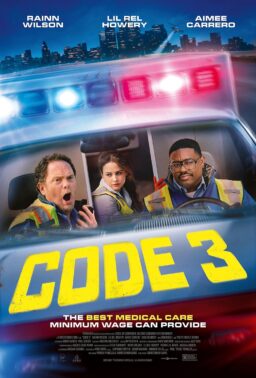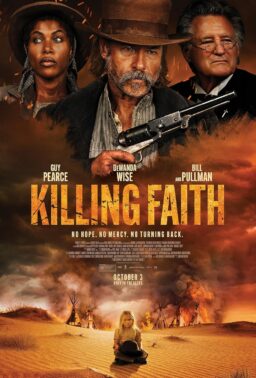John Alvin changed the way that a generation and an industry
looked at film. It sounds like hyperbole, but so many of the iconic images that
I associate with the films of my youth may have been traced by the filmmakers
but were inked by Alvin. A true artist, the most important movie poster
designer of the ‘70s and ‘80s took the visuals of the industry and turned them
into art. When I was a teenager, I actually collected movie posters, framed and
hung on my wall, and I believe that Alvin’s approach to the form greatly
influenced my love of movies. This wasn’t advertising, it was art—an extension
of the art of filmmaking in the way it distilled the essence of a story down to
imagery.

The raucous lunacy promised by the posters for “Blazing Saddles” and “Young
Frankenstein.” The iconic connection in the center of the poster for “E.T.” The
way the artwork for “Blade Runner” blended noir and a vision of the future. The
lyrical beauty of the posters of the ‘90s Disney renaissance. Even just the
perfect simplicity of “Jurassic Park.” John Alvin was an artist and a new book
about his work, “The Art of John Alvin,” is a must-own for fans of the lost art
of the movie poster.
“The Art of John Alvin,” available today, is a coffee table
book with some incredible archival material, including sketches for posters
that never saw the light of the multiplex, and the stories behind Alvin’s most
important works courtesy of his widow, Andrea Alvin. The book is filled with
amazing behind-the-scenes stories of how some of our most iconic film posters
came to be, but, as you might expect, is heavier on large reprints than text.
It’s a picture book for a visual artist, and it’s a great one.

John Alvin was a young freelance artist, a graduate of the
Art Center College of Design in L.A., when he was asked to create a poster for
a new comedy on spec. The comedy was “Blazing Saddles,” arguably the best of
all time, and Alvin’s art would become not just closely associated with the
film—many ‘70s film posters have been replaced on subsequent VHS/DVD/Blu-ray
covers but not this one—but remarkably influential. It launched a career,
helped push Brooks’ work to the center (he would instantly hire him to do “Young
Frankenstein” as well), and made clear that movie posters could have a life and
artistry of their own. Alvin, as she does with most of the key works of her
late husband’s career, details the process that led to the “Blazing Saddles”
poster, noting her contribution to the work and even detailing the process—he painted
it on a 30 x 40 illustration board.
John Alvin took the energy of that “Blazing Saddles” poster
and ran with it. His career includes the amazing work for “Phantom of the
Paradise,” “Star Wars, Episode VI: Return of the Jedi” (and you’ll see sketch
work on the legendary “Revenge of the Jedi” posters in the book), and “Blade
Runner.” The next huge leap forward would come with “E.T. The Extra-Terrestrial”
in 1982, and it’s clearly the work that Andrea Alvin considers essential to her
husband’s work, devoting the cover and ten pages to it, including early designs
and sketch work. According to the author, John Alvin was so involved in the art
for “E.T.” that he was there working on it back when it was called “A Boy’s
Life” and still filming. She even argues he influenced the final product. It
feels almost impossible today to have a visual poster artist that closely tied
to a major film as now posters and marketing are seen not as art but ways to
push product. Great trivia—perhaps the reason that John focused so heavily on
E.T.’s hand in the poster is because that’s all he had been allowed to see
during the top-secret production.

More ‘80s classics would pile up—“The Goonies,” “Short
Circuit,” “Legend,” “The Golden Child,” “The Lost Boys,” “Empire of the Sun.”
Some of the most interesting behind-the-scenes details come during the
production of Tim Burton’s “Batman.” As fans will remember, the art for that
film was kind of uninspired, focusing mostly on the Bat symbol, which even
Burton didn’t like, apparently (people complained it looked like a mouth).
Alvin designed some incredible work that never made it through the process but
is available here (and he’d get the chance again on “Batman Returns“). On a similar note, a later chapter in the book offers dozens
of unused “Jurassic Park” posters, half of which would be the most interesting
poster of the year were they in theaters this Summer. Pardon my cynicism but “The
Art of John Alvin” makes the “Floating Head” approach to marketing in the ‘10s
even more dispiriting.
Finally, there’s the undeniable fact that John Alvin played
a role in the childhood of millions. When Disney was looking to change its
image and revolutionize its animation house, they needed art that would stretch
their demographic. How can we sell this animated film to adults? Alvins’ work
on “Beauty & the Beast,” “The Lion King,” and “Aladdin” did just that,
selling these works not as cartoons but as art. The quality of the filmmaking
was essential but people needed to get into theaters to see the films and Alvin
helped make that happen. He played such an essential part of that process, one
that led to the domination of animated films today. John Alvin may not be
around to have that influence any more but it still resonates. And one hopes
that studios, producers, marketers, and artists pick up “The Art of John Alvin”
and remember a time when movie posters weren’t just ways to sell movies but
complements to them.












